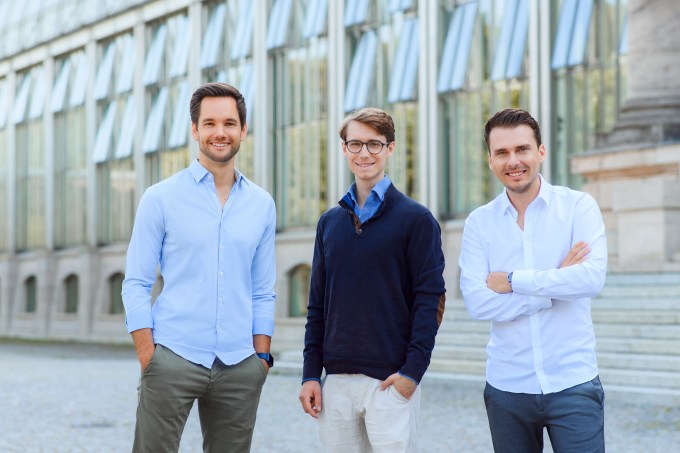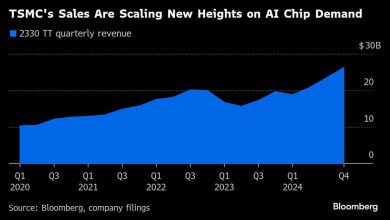The race is on to build a new generation of healthcare software to replace legacy hospital systems that in some cases may not have been updated in decades. A startup out of Munich, Germany called Avelios has ambitions to build a new kind of end-to-end operating system, leaning into more modern tooling using AI and cloud services. On Thursday it announced €30 million ($31 million) in Series A funding as it gains momentum.
Sequoia is leading the round out of its London office, with investors from Avelios’ seed round also participating, including High-Tech Gründerfonds, Revent, and individual investors.
The startup is not disclosing valuation but the round is coming on the heels of Avelios having grown impressively — all on just €5 million of prior funding. To date, Avelios says it has signed up 12 customers, all in its home market of Germany, including one of the largest private hospital chains, Sana Kliniken AG; the hospital of the Ludwig-Maximilians-University in Munich, and the hospital of the Hannover Medical School.
“I think we’ve been quite efficient,” CEO Christian Albrecht told TechCrunch. “We have a really, good engineering team, and a team of 11 medical doctors here.”
Albrecht — who co-founded the company with CTO Nicolas Jakob and chief medical officer Sebastian Krammer — said in an interview that the plan is to use the funding to help continue developing its system and work on breaking into more markets. It’s in discussion with a hospital chain in Spain and says it’s also looking at France and the U.K.
Avelios is taking a ground-up approach to the world of healthcare systems, aiming at a market that has up to now largely been built around siloed implementations that serve specific purposes, and have thus had to be specially integrated to work together (and might have never worked that well together as a result).
But, like a health issue may start small before it becomes all-consuming, Avelios itself did not start out knowing the scale and scope of what it would end up building.
As Albrecht (pictured above left, with Jakob and Krammer) describes it, Krammer had been working as a doctor during the COVID-19 pandemic, when the creaky nature of the German healthcare system was laid bare to him.
“He ran through hospitals and spent almost all of his time counting patients by hand and then reporting the results to authorities by hand,” recounted Albrecht. Krammer then consulted with Jakob, who he knew from before, on how to possibly build something to improve reporting to gain better insights into emerging trends.
“Nico [Jakob] is a software engineer and quite an expert on deep learning,” he continued. “And they tried. They did very promising AI research, and they tried to expand that research, but they quickly discovered, like a lot of other people, that with hospitals’ outdated systems, they couldn’t provide the data they would need to get their AI system to work.”
Albrecht was an old friend of Jakob’s — they’d built a previous company together — so he was brought on to help them get more organized around how to build something usable. They quickly realised that fixing one thing would have required fixing another, and so on — again, not unlike a health issue.
“We were faced with quite an important decision,” he recalled. “Should we either treat the ‘symptoms’ and build a point solution on top of that existing chaos, on top of the existing IT systems, or do we actually treat the root cause of this, and build an entirely new hospital information system?”
They made a big call, he said, and went for the latter, “knowing it would be harder, knowing it would take us longer, but in full belief that this way you can solve a lot of those root causes; and then in the second step, after having done that detour, be uniquely positioned to do all the fancy AI stuff on top, because you have structured data, you can integrate AI solutions.”
And so it took years, but Avelios eventually ended up building a system that is end-to-end for all things administrative: it includes EHR (electronic health records), billing, clinical records and lab results, patient portal and environments for researchers and people working across different departments or institutions to collaborate.
In addition to the wake-up call of COVID-19 (which, in Germany, itself came with a funding boost from the government to update systems), there have been some other significant shifts that have helped Avelios land conversations, and then deals, with healthcare providers.
The first of these has been a change of direction for what is probably its biggest incumbent competitor. SAP — one of the biggest providers dominating the legacy IT market in healthcare (and other verticals) — has been on a path to transitioning its $30 billion enterprise resource planning (ERP) business onto a cloud services architecture. That has meant it has shifted away from building, and helping to support long-term, point-specific solutions for particular verticals, including healthcare.
More than 1,000 hospitals using SAP’s legacy systems will thus need to change providers when upgrading. (SAP recommends Avelios, among others, as a transition partner, and Albrecht said they are working on trying to get into a pole position in that recommendation flow.)
The second is the big push for AI. Like many other industries, healthcare is not just being pushed towards AI solutions; it’s also asking for them. But they cannot move forward on effective AI applications without having their data in a state to be used and useful — structured, interoperable — and legacy systems typically aren’t built for that. That becomes another fillip for updating.
Sequoia’s attention started out by way of an introduction from Revent, one of the seed investors.
“Avelios was under the radar building this system for four years,” Anas Biad, Sequoia’s partner leading on the investment, said in an interview. He said he was completely surprised to discover once he started to look just how many customers they’d picked up despite being so quiet. “They managed to win some of the largest private and public hospitals in Germany. We were pretty amazed and we sprinted very fast after that.”
Although Avelios is making a big and ambitious swing here, it’s doing so also with a lot of pragmatism, the investor said. Hospitals are not typically going to turn around and rip out entire systems wholesale to update, not least because they have to continue operating, but also because of the cost.
Indeed, this cybersecurity report from 2022 — from the Healthcare Information and Management Systems Society — found that among the hospitals it surveyed some 73% described their systems as “legacy”. (Broken down they included 35% using Windows Server 2008; 34% using Windows 7; 25% using a legacy medical device OS; 21% using an industrial control systems OS (21%); and (shock horror) 20% still using Windows XP; as well as 19% using Windows Server 2003; and 2003 R2 (19%).)
“Some healthcare organizations may not necessarily be planning for obsolescence of these operating systems,” the HIMSS writes in the report. “Every asset has a useful life, and it is important for organizations to plan for its end of life.”
Avelios’s approach has therefore been to keep things modular.
“We can land modularly with customers,” said Albrecht. He explained this could first mean providing software for helping with administrative functions around keeping documentation, then billing, then patient portal, or in a different order. “That’s something that existing legacy players can’t offer, because they would replace one monolithic system with another monolithic system, and then you only have the Big Bang option. And that’s why a lot of those projects go so horribly wrong.”
This article originally appeared on TechCrunch at https://techcrunch.com/2025/02/06/avelios-nabs-31m-led-by-sequoia-to-fix-the-ailing-world-of-healthcare-it/







